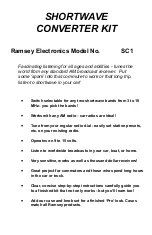
5 All about VLT 2800
5.1 Special Conditions
5.1.1 Galvanic Isolation (PELV)
Achieve PELV (Protective Extra Low Voltage) isolation by
inserting galvanic isolators between the control circuits
and circuits that are connected to the mains. The
frequency converter is designed to meet the requirements
for protective separation with necessary creepage and
clearance distances. These requirements are described in
standard EN 50 178. It is also a requirement that the instal-
lation is carried out as described in local/national
regulations regarding PELV.
All control terminals, terminals for serial communication
and relay terminals are safely separated from the mains
potential, that is, they comply with the PELV requirements.
Circuits that are connected to control terminals 12, 18, 19,
20, 27, 29, 33, 42, 46, 50, 53, 55 and 60 are galvanically
connected to one another. Serial communication
connected to fieldbus is galvanically isolated from the
control terminals, although this is only a functional
isolation.
The relay contacts on terminals 1-3 are isolated from the
other control circuits with reinforced/double isolation, that
is, PELV is observed, even though there is mains potential
at the relay terminals.
The circuit elements described below form the safe electric
separation. They fulfil the requirements for reinforced/
double insulation and associated testing according to EN
50 178.
1.
Transformer and optical separation in voltage
supply.
2.
Optical isolation between Basic Motor Control
and control card.
3.
Isolation between the control card and the power
part.
4.
Relay contacts and terminals relating to other
circuits on the control card.
PELV isolation of the control card is guaranteed under the
following conditions:
•
TT network with maximum 300 V
rms
between
phase and ground.
•
TN network with maximum 300 V
rms
between
phase and ground.
•
IT network with maximum 400 V
rms
between
phase and ground.
To maintain PELV all connections made to the control
terminals must be PELV, for example, thermistor must be
reinforced/double insulated.
5.1.2 Ground Leakage Current and RCD
Relays
Ground leakage current is primarily caused by the parasitic
capacitance between motor phases and motor cable
screen. When an RFI filter is used, this contributes
additional leakage current, as the filter circuit is connected
to ground through capacitors.
The size of the ground leakage current depends on the
following factors, in order of priority:
1.
Length of the motor cable.
2.
Motor cable with/without screen.
3.
High switching frequency.
4.
RFI filter used or not.
5.
Motor grounded on site or not.
The leakage current must be handled carefully during
handling/operation of the frequency converter if (by
mistake) the frequency converter has not been grounded.
WARNING
Since the leakage current is > 3.5 mA, reinforced
grounding must be established, as this is required to
ensure compliance with EN 50178. The cable cross-
section must be at least 10 mm
2
or 2 rated ground wires
that are terminated separately.
WARNING
Do not use RCD relays (type A) that are not suitable for
DC fault currents from 3-phase rectifier loads.
If RCD relays are used, they must be:
•
Suitable for protecting equipment with a DC
component in the faulty current (3-phase bridge
rectifier).
•
Suitable for a pulse-shaped, brief discharge on
power-up.
•
Suitable for a high leakage current (300 mA).
See
chapter 3.4.10 Ground Connection
for further
information.
All about VLT 2800
Design Guide
MG27E402
Danfoss A/S © Rev. May/2014 All rights reserved.
127
5
5
















































